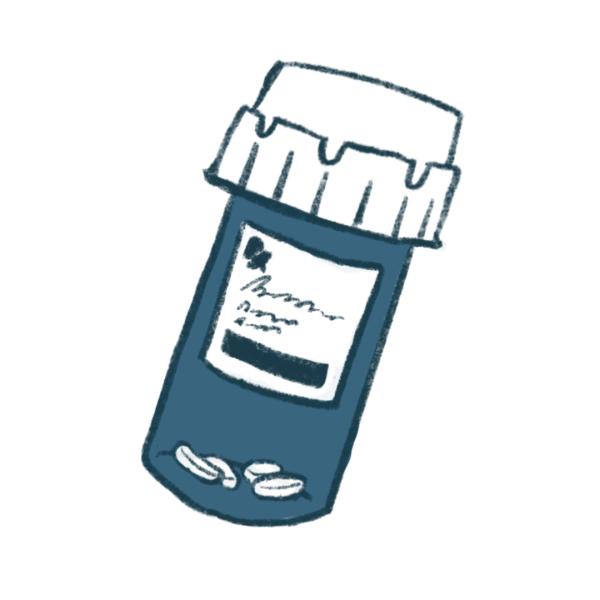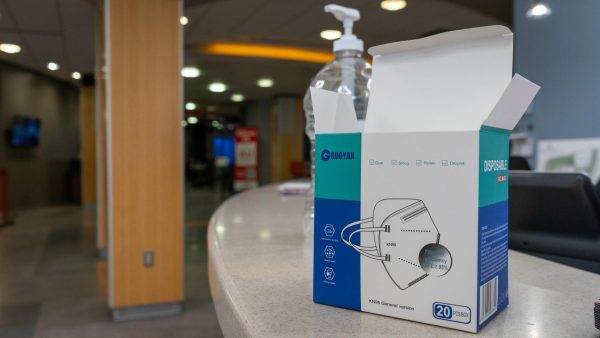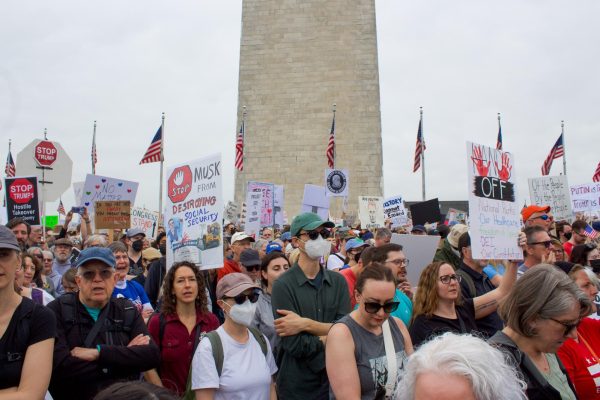Helping Heroin Users Get Clean: DC's Innovative Harm Reduction Policies
But at the Kolmac Clinic Silver Spring addiction treatment program, which provides treatment for opioid addicts, there’s been a shift in the clients they serve. The staff notes they’ve been seeing fewer heroin addicts, but the abuse of prescription opioid drugs such as Vicodin and Oxycontin is on the rise. Not only that, but their clients are younger.
“Clearly, the use of opioids has increased,” said Moe Briggs, regional clinical director at the Kolmac Clinic.
Despite this decrease in heroin use, the health problems associated with intravenous heroin are highly visible in parts of DC, primarily in Wards 3, 4 and 5, and occasionally in 6 and 7, according to the Metropolitan Police Department.
Intravenous drug users (IDUs) in the United States represent seven percent of new HIV infections in males and 14 percent for females according to a report by AVERT, an international HIV and AIDS charity. These infections spread when infected drug users share used needles with other IDUs .
In Washington, DC, there were 42 new HIV infections in IDUs in 2010, down from 150 infections in 2007, according to a 2011 report by the Department of Health. The report attributed the change to the DC’s expansion of needle exchange services. Infections in IDUs accounted for roughly five percent of all new infections in DC during 2010. In total 588 people—or 10.1 percent of people— in the District living with HIV were infected IDUs.
Groups such as Helping Individual Prostitutes Survive (HIPS) in Northeast DC and the now-defunct Prevention Works have contributed to the drop by providing drug users access to clean needles by allowing IDUs to dispose of used needles in return for sterile ones. Such needle exchange programs are harm reduction methods used to decrease the spread of HIV and other blood-borne diseases.
Organizations like HIPS have access to federal funding for certain services, but are not allowed to use federal funds for needle exchanges. A counselor receiving federal funds can legally provide certain services that HIPS operates, but must refer IDUs seeking needle exchange services to a separate syringe specialist within the organization. Executive Director Cyndee Clay says this overall reduces the number of needle exchanges that are performed.
The decades-long ban on federal funding was repealed in 2009, but reinstated again in 2011 as a part of the 2012 Federal Budget bill. Without access to federal funds, needle exchanges in the District area must operate from private funds.
Through their needle exchange program, HIPS distributed roughly 145,000 needles last year and Clay expects that number to double in 2012. The needles, bought in bulk, cost between seven and eight cents each.
***
But the risks of intravenous drug use aren’t limited to the transmission of blood-borne infections such as HIV or hepatitis, which can be prevented by providing clean needles.
Other factors such as dirty water, bacteria and impurities in heroin can all lead to vein damage and skin abscesses when the drug is injected.
HIPS educates IDUs on the prevention of injuries associated with injection drug use, and also provides syringe kits. These kits contain sterile water and clean metal containers that allow users to boil powdered heroin down into an injectable form, and cotton filters to separate impurities from the heroin.
Intravenous heroin users face risks when they are unaware of the potency of their heroin, says Officer Keith Gray, a member of the Metropolitan Police Department’s Narcotics unit and an American University graduate.
Some dealers sell high-purity heroin for a more desirable product. But Gray said that if the heroin is too strong for a user’s tolerance, they may suffer an “automatic overdose on the spot.”
Other dealers dilute or “cut” their heroin with a variety of substances to maximize their profits. But Gray says lower potency does not mean lower risk.
“How much you break it down or what you put into it can have an adverse effect,” Gray said.
According to a pamphlet on the MPD website, heroin is sometimes cut with sugar, starch, powdered milk or the anti-malaria medicine quinine. But it can also be cut with fentanyl, another medical opioid with a potency 30 to 50 times that of heroin, according to the Centers for Disease Control.
MPD’s primary role during interactions with IDUs is to confiscate illegal drugs and investigate drug trafficking and violent crime, but MPD officers are given first responder training that allows them to recognize the signs of a heroin overdose and provide medical assistance.
While using heroin and other opioids is illegal, Clay says needle exchange and other harm-reduction services are important.
“Syringe exchange has been proven time and time again,” Clay said, pointing to the decrease in HIV rates among IDUs since the D.C. Department of Health expanded syringe access.
The range of services that IDUs can access at a needle exchanges gives this service its own important role alongside the medical community and addiction treatment programs, according to Clay.
Drug users come to these services to get clean needles, but also have the opportunity to take rapid-result tests for HIV and hepatitis C.
“[Needle exchanges are] one of the most proven, cost-effective public health interventions for reducing HIV and hepatitis C,” Clay said.
Clay says contrary to the concerns of needle exchange opponents, increased needle access has not increased drug use. She believes people are misinformed about drug use because it is an uncomfortable topic for many people to discuss.
Clay says drug treatment programs are not always successful on the first attempt, and many users enter rehabilitation programs several times before they are successful.
“It’s challenging for those who have friends and family members injecting drugs,” she said. “We hate what drugs have done to their lives. We help people until they’re ready for other kinds of help.”











